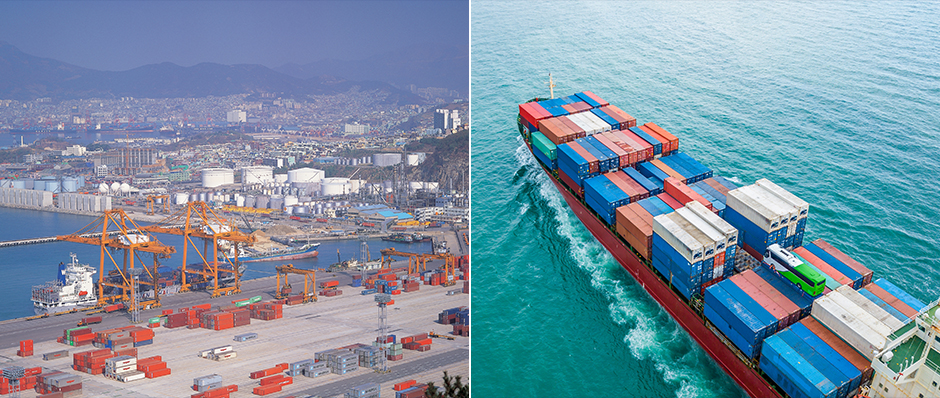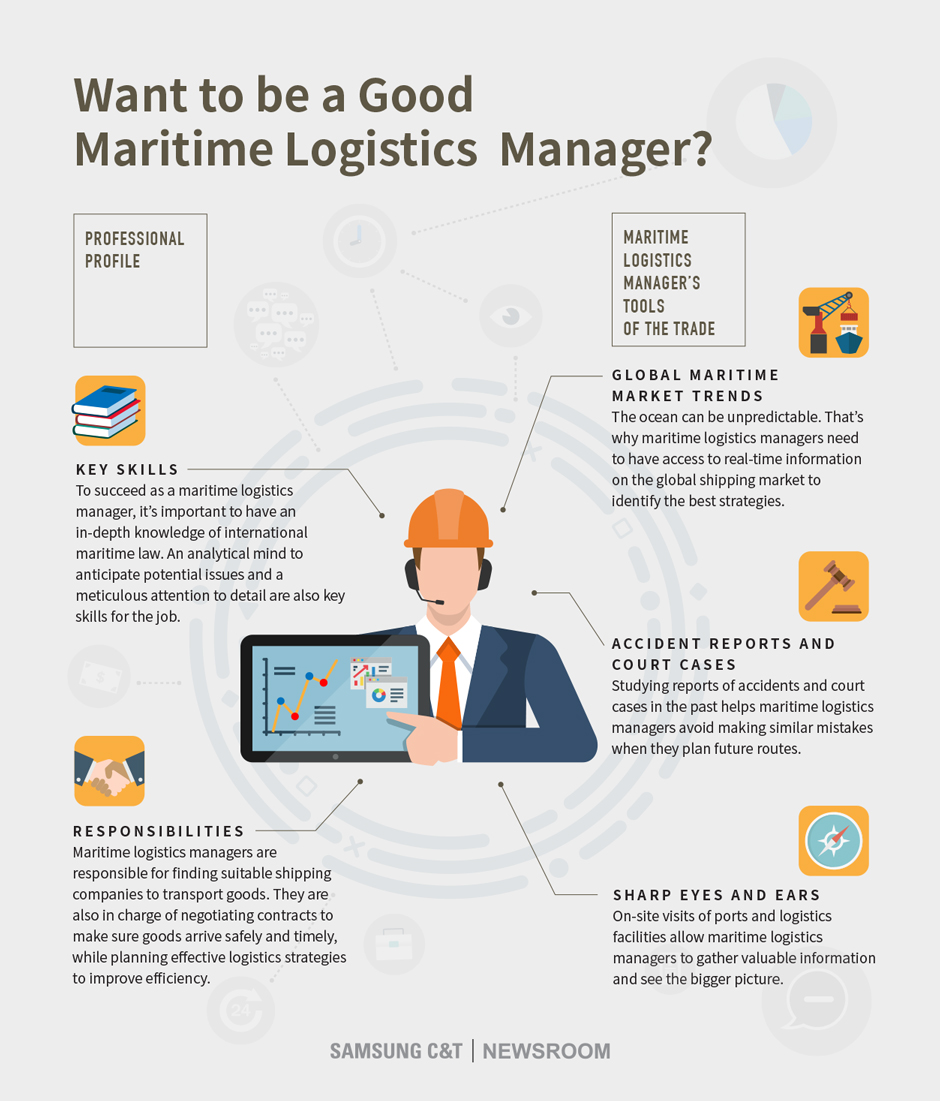People have traded goods by sea for millennia. Even after the invention of airplanes, ships continue to be the main means of transportation for carrying goods and raw materials across the world. Due to its cost-effectiveness, over 90% of world’s trade today is carried by sea.
Despite advances in navigation technology, shipping goods across vast stretches of ocean is still a risky business. Weather conditions could affect timely arrival of cargos, while costs could swing wildly due to accidents or other unforeseen circumstances.
Charting the High Seas
In ancient times, people made lavish offerings to gods and prayed for good fortunes before setting off on a voyage. Today, the responsibility of protecting goods and raw materials on trans-oceanic journeys falls on the maritime logistics manager.
For nearly two decades, Kang Il-hwan has been guiding ships to safety through unpredictable waters. Since joining Samsung C&T trading group three years ago, the 46-year-old maritime logistics manager has been helping the company make timely delivery of steel, fertilizer, coal, and chemical products to customers.
Kang spends much of his workdays planning routes for different goods with his team. Once they decide on a route, the maritime logistics manager identifies suitable shipping companies to handle the cargos and negotiates contracts with them.
“Examining every clause in contracts is a key part of my job because it’s one of the most important ways to mitigate against any risks,” Kang says.
Beyond the Route
Just last year alone, the trading group shipped over 6 million tons of goods around the world, which accounted for 40% of the company’s entire trading volume.
For this reason, Kang says mistakes in contracts and shipping routes can have far reaching consequences.
“Claims in the shipping process directly affect the company’s profitability,” he says.
But it’s not just about preventing accidents or errors. Another aspect of a maritime logistics manager’s work is to come up with more efficient shipping solutions, which Kang says requires the insights from the sales team if they want to stay ahead of the pack.
“We need to know the needs of our clients in different fields before we can find effective solutions,” Kang says. “Understanding the business models of different industries helps us improve logistics strategies as well as our sales team’s competitiveness in the market.”
Preparing to Make Waves
History, as the adage goes, often repeats itself. It’s only through learning from the past that the cycle can be broken.
According to Kang, this is an invaluable insight for anyone who wish to succeed in logistics. By studying past logistics accidents and court cases, Kang says he can avoid making the same mistakes when he plans his routes.
In addition to having an in-depth knowledge of the industry’s history, Kang says on-site visits of different ports and logistics facilities are also invaluable.
“Being at the facilities physically makes an enormous difference because it allows me to see the bigger picture,” he says.
Despite having years of experience, the logistics veteran says he is still searching for ways to improve the trading group’s operations. “How can we provide better logistical support for emerging markets? And what can we change to expand our reach? These are the questions I ask myself every day at work,” Kang says.
Think you’ve got what it takes to be a maritime logistics manager? Take a look at the infographic below to learn more!












